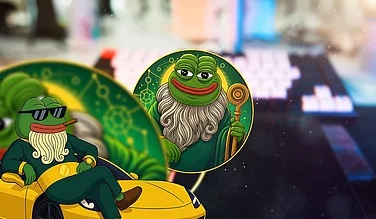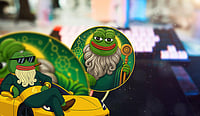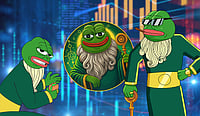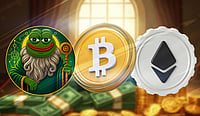The internet has been perhaps the most revolutionary technology of the modern age, revolutionizing the way we interact, learn about the world, and do business. It has evolved through a number of phases throughout the years, offering emerging opportunities and challenges. Web2 and Web3 are two distinct phases in this process. While Web2 introduced the revolution of social media, user-generated content, and e-commerce, Web3 introduced an entirely new idea of decentralization, openness, and user ownership. Comparing Web2 to Web3 can help in visualizing the future of the internet and digital society altogether.
1. Ownership and Control
One of the biggest differences between Web2 and Web3 is ownership and control of data and platforms. Individuals engage with social networking sites, video sharing sites, and marketplaces in Web2, but never own the infrastructure or content once it is deposited there. Large corporations do. They set the rules, monitor the content, and sell user data to fund ad models. While most of the value is created by users, the advantages go overwhelmingly to the platform owners.
Web3 breaks away from this centralised paradigm by returning control to the users and creators. It's based on blockchain technology, which makes it possible for distributed networks in which individuals can hold their data, identities, and assets directly. In this decentralised world, nobody has the authority to modify rules at will, remove posts, or sell out the users' information. Users not only engage but are also stakeholders of the communities they adore. This democratization of internet ownership is one of the central principles of the Web3 revolution and a seismic shift in the power dynamic of the internet.
2. Data Management
In Web2 platforms, the personal information is a central asset, whose harvesting in the majority of cases is not transparent whatsoever and is utilized for delivering targeted advertising or shaping the behaviors of users. The centralized database enables organizations to aggregate and interpret user information but in doing so subjects the users to data hacking, privacy infringement, and disempowerment of their digital trail. Once data is uploaded onto a platform, it can be kept permanently, utilized without permission, and sold to third parties, often beyond the user's control.
Web3 offers a radically different model of data control. It makes possible the vision of self-sovereign identity, in which people can hold and guard their own personal data independent of third-party systems. Through cryptographic techniques and decentralized storage, users can be responsible for access and use permissions to their data. Further, blockchain's immovable record system makes accountability possible, in which users can monitor who is using their data and how. This system acts to rebuild trust in the Internet world with an eye towards keeping private the person and with permission, providing users with the sovereignty that Web2 systems did not have.
3. Incentives and Monetization
Web2 is fueled primarily by ad money and playing with user attention.
The pages are constructed to receive as much engagement as possible—most frequently by the expense of user satisfaction—since activity on the website will pay off for the site in terms of advertising. Users are responsible for creating content, bringing traffic, and building communities, but rarely do they get any portion of the revenue that they generate. Monetization avenues for creators are available but are usually restrictive, platform-based, and with varying limitations. Web3 does the monetization strategy on its head. The user in Web3 can engage directly within the economy through channels like cryptocurrency, non-fungible tokens (NFTs), and decentralized finance (DeFi).
Token-based systems compensate users for their input, whether it is content creation, validation, or platform architecture. Smart contracts enable transactions to be autonomous, transparent, and fair in financial transactions. The new economic model of incentives enables creators, developers, and communities to earn money based on their contribution. Web3's economy is inclusive and community-driven, ending platform monopolistic control.
4. Governance Models Governance
Platforms are run by internal corporate teams that develop policy, impose rules, and make decisions behind closed doors. Users usually have no control at all over the direction of the site, and radical changes like algorithmic changes or policy changes can have far-reaching effects without warning or remedy. This absence of transparency and accountability usually results in user dissatisfaction, especially when sites act in their own best interests to the detriment of the community. Web3 offers a more democratized vision through decentralized autonomous organizations (DAOs).
They are blockchain-based organizations in which decisions are taken collectively by token holders.
Anybody with a stake in the project can suggest, vote on, and decide changes. The system favors transparency, equity, and collective accountability in governance. Power is decentralized rather than concentrated, and laws are written in smart contracts that cannot be arbitrarily changed. DAOs are a new paradigm for online organization in which communities self-govern, establish collective objectives, and grow together—something that is virtually impossible under the old Web2 paradigm.
5. Interoperability and Access
Web2 sites are generally closed systems, occasionally resulting in "walled gardens" where information and services are not easily portable. Users struggle to move their content, resources, or identity from one website to another, leading to lock-ins and fragmentation. Siloed nature deters innovation, reduces user convenience, and facilitates the concentrations of big tech firms.
Web3 focuses more on interoperability and open-source protocols.
Platforms are designed to be modular and interoperable so that users can seamlessly transfer data, identity, and assets between services. It supports collaboration, enhances user control, and strengthens a more connected digital life. With open standards and decentralized networks, Web3 seeks to remove the obstacles standing in the way of true digital ownership and portability. The vision is to build an internet that is not only more open but more inclusive and future-proof.
Conclusion
The shift from Web2 to Web3 is not a technical improvement but a paradigm shift toward how we interact with the digital world.
Web2 provided unprecedented connectivity, convenience, and communication but at the expense of privacy, control, and equal participation.
Web3 overcomes these limitations by providing decentralized, open, and user-centric models of interaction, ownership, and governance. Though Web3 remains in its infancy with scalability, regulatory, and adoption issues, it promises a more resilient and people-participatory internet. In the years ahead, the battle between Web2 and Web3 will shape the next wave of digital progress.

























